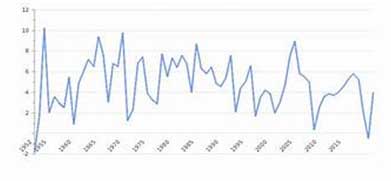
IMF forecasts Pakistan’s GDP unchanged at 4% for the fiscal year 2021-22.IMF endorses Pakistan’s provisional figures of GDP growth rate of 3.9% during the previous fiscal year 2020-21.The inflation rate would ease from 8.9% during the year 2020-21 to 8.5% by end of the current fiscal year 2021-22, says the report.
What is GDP? Gross domestic product (GDP) is a monetary measure of the market value of all the final goods and services produced in a specific time period. GDP (nominal) per capita does not, however, reflect differences in the cost of living and the inflation rates of the countries; therefore, using a basis of GDP per capita at purchasing power parity (PPP) may be more useful when comparing living standards between nations, while nominal GDP is more useful comparing national economies on the international market. Total GDP can also be broken down into the contribution of each industry or sector of the economy. The ratio of GDP to the total population of the region is the per capita GDP and the same is called Mean Standard of Living.
GDP definitions are maintained by a number of national and international economic organizations. The Organization for Economic Co-operation and Development (OECD) defines GDP as “an aggregate measure of production equal to the sum of the gross values added of all resident and institutional units engaged in production and services (plus any taxes, and minus any subsidies, on products not included in the value of their outputs)”.
An IMF publication states that, “GDP measures the monetary value of final goods and services—that are bought by the final user—produced in a country in a given period of time (say a quarter or a year).
GDP is often used as a metric for international comparisons as well as a broad measure of economic progress. It is often considered to be the “world’s most powerful statistical indicator of national development and progress”.
However, critics of the growth imperative often argue that GDP measures were never intended to measure progress, and leave out key other externalities, such as resource extraction, environmental impact and unpaid domestic work. Critics frequently propose alternative economic models such as doughnut economics which use other measures of success or alternative indicators such as the OECD’s Better Life Index as better approaches to measuring the effect of the economy on human development and wellbeing.
The International Monetary Fund (IMF) in October 2021 forecast Pakistan’s GDP growth rate unchanged at 4% for the fiscal year 2021-22.
In its recent report “World Economic Outlook October 2021”, the IMF warned that large disparities in COVID-19 vaccine access and in policy support in many developing countries could hamper their economic recoveries.
The Asian Development Bank, in September, had also projected Pakistan’s GDP to reach 4% in the fiscal year 2021-22 (FY22) as business activity gradually resumed in the second year of the COVID-19 pandemic. However World Bank lowers Pakistan’s GDP growth prospects. ADB projects Pakistan’s GDP to rise by 4% in fiscal year 2022. Pakistan’s GDP expected to grow by 4.2% in FY22: Fitch (rating agency).
In its report, the IMF endorsed Pakistan’s provisional figures of GDP growth rate of 3.9% during the previous fiscal year 2020-21.According to the report, the unemployment rate in Pakistan would also decline from the current 5.0% to 4.8% in the current fiscal year. Similarly, the inflation rate would ease from 8.9% during the year 2020-21 to 8.5% by end of the current fiscal year 2021-22.
Further, the IMF reported that the current account deficit of Pakistan which was recorded at 0.6% in the previous year would increase to 3.1% in FY2021-22.
The IMF reported that the global economic recovery continued amid a resurging pandemic that posed unique policy challenges. Gaps in expected recoveries across economy groups have widened since the July forecast, for instance between advanced economies and low-income developing countries.
Analysts said Pakistan’s economy appeared to have weathered the pandemic shock well relative to its peers and the central bank last month said the pace of the economic recovery has exceeded expectations.
In its World Economic Outlook, the IMF trimmed its 2021 global growth forecast to 5.9% from the 6.0% forecast it made in July.
It left a 2022 global growth forecast unchanged at 4.9%. The IMF said the dangerous divergence in economic prospects across countries remains a major concern and “economic divergences are a consequence of large disparities in vaccine access and in policy support”.
“Emerging and developing economies, faced with tighter financing conditions and a greater risk of de-anchoring inflation expectations, are withdrawing policy support more quickly despite larger shortfalls in output.”
The government targeted 5% GDP growth in the current fiscal year. Gita Gopinath, IMF’s chief economist, said the global economic recovery continues amid increasing uncertainty, more complex policy trade-offs.
“The global recovery continues but momentum has weakened, hobbled by the pandemic. Fueled by the highly transmissible Delta variant, the recorded global COVID-19 death toll has risen close to 5 million and health risks abound, holding back a full return to normalcy.”
She said that pandemic outbreaks in critical links of global supply chains have resulted in longer than expected supply disruptions, feeding inflation in many countries. “Overall, risks to economic prospects have increased and policy trade-offs have become more complex.”
In fact the birth rate of Pakistan is nearly 2.5% to 3 %. i.e. 27.034 births per 1000 people, a 1.8% decline from 2020
So Pakistan needs at least 5-6% GDP growth rate with inflation less than 8%.


Can you be more specific about the content of your article? After reading it, I still have some doubts. Hope you can help me.
list of canadian pharmacies online
canadian pharmacies online reviews